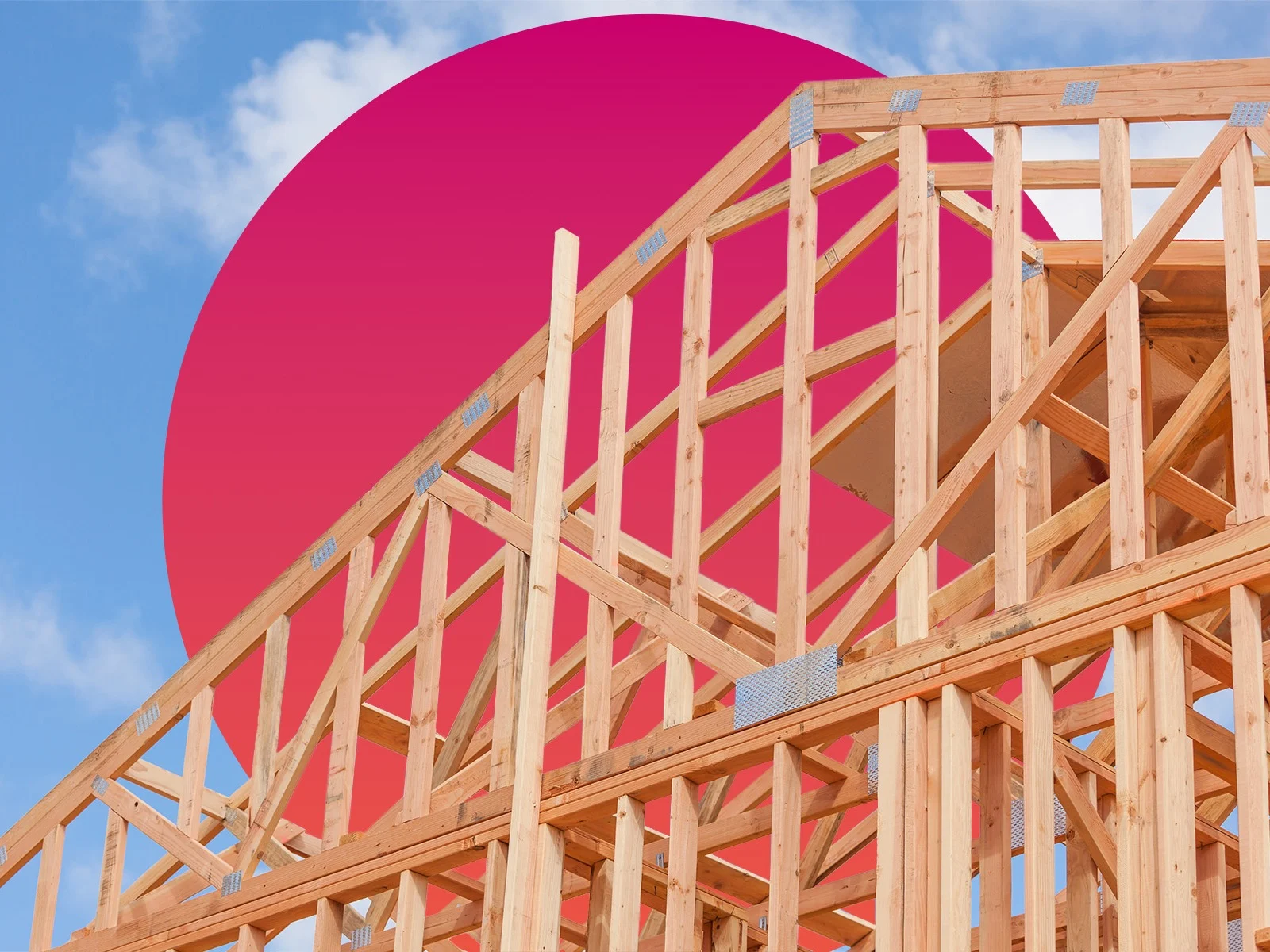Productivity and innovation across manufacturing and other major sectors of the US economy have expanded significantly since the 1970s, with one exception: housing.
After World War II, new homes outpaced other areas of growth. Yet as US productivity doubled between 1970 and 2000, housing production sank by roughly 40 percent, say Harvard Business School Professor William Kerr and colleagues in “Why Has Construction Productivity Stagnated? The Role of Land Use Regulation.”
One major reason? Tight local regulations that make it difficult to build large swaths of housing. Those, in turn, quashed incentives for smaller firms to innovate and even operate outside their own town or county because each jurisdiction has specific—and different—requirements, the researchers note.
The construction sector has been something of a puzzle.
This dynamic reduced national output overall by $1 trillion every five years. Consider this: In 1939, a typical contractor produced about one home a year—the same rate as in 2022. Autoworkers made almost five vehicles each in 1939—a figure that soared to 25 in 2022.
Kerr, the D’Arbeloff Professor of Business Administration at HBS, coauthored the paper with Leonardo D'Amico and Edward L. Glaeser from Harvard’s Department of Economics; Joseph Gyourko from University of Pennsylvania’s Wharton School of Business and Giacomo A.M. Ponzetto from the Universitat Pompeu.
HBS Working Knowledge talked to Kerr about the state of the housing sector in a conversation that was lightly edited for length and clarity.
How does this research tie into your work on cities and entrepreneurship?
Bill Kerr: I’ve long been interested in how cities and countries improve their economic positioning, grow, and develop new opportunities. The construction sector has been something of a puzzle.
On the one hand, the construction sector is very entrepreneurial. Many new firms are started every year, and the sector accounts for a disproportionate share of small businesses in America.
But you also very rarely see those companies scale up in the way that other startup companies or new ventures might develop. In parallel, macroeconomists provide evidence that the construction sector is holding back the broader economy.
There are spillover effects from the construction sector that enable other activities to emerge, just like we think about roads and high-bandwidth internet as infrastructure important for enabling development.
Why does productivity diverge so sharply starting in the 1970s?
Kerr: When we talk about the divergence for construction that happened in the 1970s and ‘80s and then beyond, it's important to recognize that divergence happens relative to all manufacturing activity and many other sectors. Otherwise, my hypothesis might be: “What made the auto industry different?”
But it's really construction that goes sideways from the 1970s onwards and even declines some. The rest of the economy, and particularly those sectors that build things, like manufacturing, continued to increase productivity over time. That productivity growth is what we would anticipate and expect.
Why compare cars and homes?
Kerr: Productivity in those two sectors was actually quite comparable for a period of time, and then diverges with the auto sector continuing to become more productive versus less.
When you frame it that way, you can challenge people to see how construction could be different. The sector performed differently in the past, in ways that were more productivity enhancing.
The modern home that we build today is more advanced, larger and has more amenities than the home we built in the 1970s.
When I was in Canada over the holiday break, there was a show about Canadian construction. Some of the leading companies were building prefabricated modules that they were going to turn into a six-story office building. Why is this important for them? The companies can use more advanced machinery in their facilities. Moreover, they can work day in and day out without stopping when, say, a snowstorm hits the area.
What else is holding new housing back?
Kerr: The modern home that we build today is more advanced, larger and has more amenities than the home we built in the 1970s. If you look at any measure of the number of houses built per construction employee, that fact does bear some responsibility for the sector not producing as many units.
But even after we account for these quality differences, we still find the industry is dominated by very small employers. Often 40 percent of the industry is comprised of firms that have fewer than five employees. In the auto industry, that fraction is about 2 percent.
One reason is that the housing sector faces myriad local regulations that make it more difficult to build projects at scale. When you have that diminished capacity to do the bigger thing, it reduces the incentives of the small firms to invest in technology and innovation and improved production methods to try to grow.
What’s an example of a potential innovation?
Kerr: Prefabricated or assembly units—those would enable a business to build more structures and do it more effectively. But there's not as strong of an incentive when serving a single community to make it happen.
The impact, though, can come from more directions. The person who built our house in Lexington, for example, only builds in the town of Lexington, won't even go to the next town over. And the reason being that the policymakers, the regulations, the boards that they have to go through differ significantly from town to town. This builder doesn't find it worth his time to navigate that in more settings than one. So consequently, he's been limited to how big his company's ever going to grow.
Are densely populated areas with less land more affected?
Kerr: It certainly plays a role. Especially in parts of the Northeast, you can find cities where a lot of the available land has been utilized, which slows subsequent growth.
Importantly for our argument, we find that these same effects—the small firms that dominate the construction industry, the limited growth and investment—are true in the Atlantas and the Houstons and the Phoenixes … the places of the country where there is lots of land that could be developed. We find many of the same patterns and trends in those locations as we do in New England.
How do your findings apply to rebuilding, like after the Los Angeles fires?
Kerr: There are historical cases, when a fire decimated a large portion of the city, that the rebuilding process allowed planners to update the urban form in ways the boosted the local economy and made the city more pleasurable. One application of this study would be to appreciate that opportunities of that size are best met by companies that can operate at that scale.
The answer to LA rebuilding is probably not a bunch of super-small firms each doing one house here, one house there. It would be great if there was some opportunity to harness the benefits of scale more quickly, providing people a home.
Now, if I can just quickly emphasize, it’s no one's dream that this is about creating the same cookie-cutter home. You can have lots of different varieties that sit inside a community and can still appeal to the same logic or forces.
Likewise, while we mostly study the housing sector in our work, we have every reason to believe that the same forces that we're describing operate in building for restaurants, building for office buildings, building for scientific labs. None of the offices being built in Canada looked exactly the same.
How should policymakers be thinking about this issue?
Kerr: First, it articulates a challenge due to the construction sector being populated by mostly small, small entities. If the rate of home building for the four-person company was the same as for the 400-person company on a per-person basis, then, as a policymaker, you could relax and perhaps even celebrate the many small sole proprietors.
And, indeed, there are still features of the sector that make construction more amenable to small businesses. But this study highlights that there's a consequence that comes from that.
They don't have the incentives to invest in the technologies and innovations that would come if they had bigger opportunities to tackle.
The second thing I'd recognize is you can, even with the regulation landscape we have, look to improve the sector's performance. These firms aren’t inherently unproductive. It's that they don't have the incentives to invest in the technologies and innovations that would come if they had bigger opportunities to tackle.
So, a policymaker could consider how we have created a regulatory environment that doesn't help firms take that next scaling-up step.
Again, let me go back to the builder in Lexington. You can't even get started until you've gotten multiple permits and authorizations. If there's a way to make those policies and procedures much more accessible to new companies, that will enable them to expand geographically.
What's the next area of study in this realm that interests you?
Kerr: It could be interesting to do a deeper cross-country analysis. Countries differ significantly in terms of their policy environments, and how much it costs to build stuff. You can see differences in the construction environment across European countries, through Asia and so forth. And I think many readers might be surprised to understand just how much the US is more expensive than other countries.
Construction in Paris and Singapore is cheaper than it is in most of the United States, Houston being an exception. These cities are not places that have abundant land or dictatorial regimes that mandate construction. They’re very real, alternative examples that we use to understand how the sector operates differently across locations.
It might be stretch to create an optimal policy approach, but at least, we can learn directionally what are the activities that most help the construction sector perform better, and where are the greatest roadblocks.
Image by HBSWK with asset by Andy Dean for AdobeStock.


